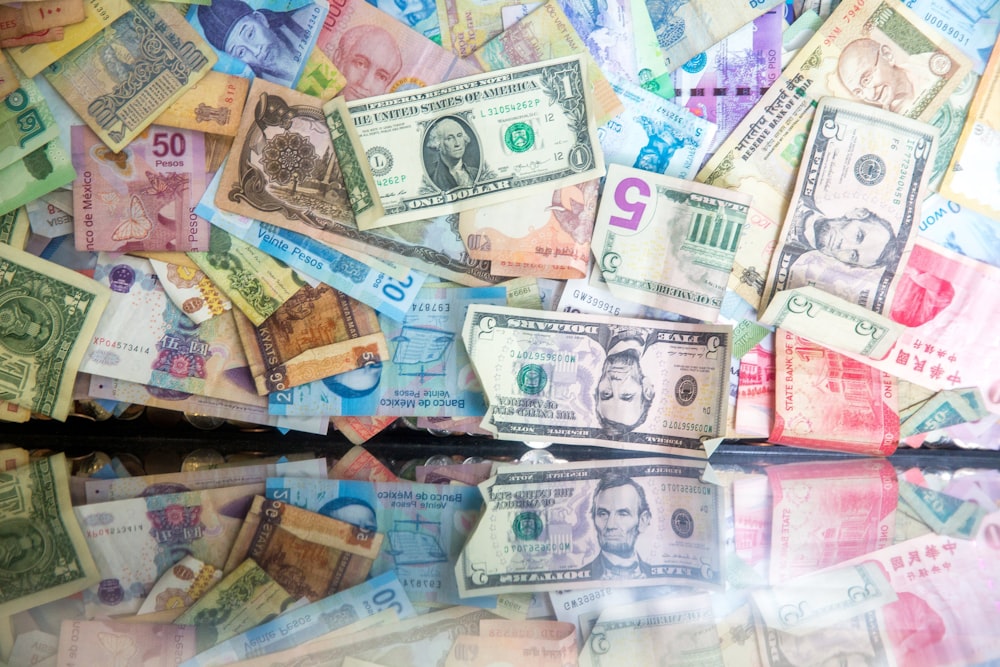FX Daily: A Glimmer Of Light For France And The Euro
Image Source: Unsplash
French PM Lecornu managed to bring the Socialist Party on board and now stands a decent chance of surviving tomorrow’s confidence vote and passing the budget. Some risk premium is leaving the EUR, while the USD is suffering from improved risk sentiment and Powell’s dovish-leaning remarks. US-China trade news and the Beige Book will be the key drivers today.
USD: Correction driven by risk, not trade
The dollar has unwound a decent portion of its recent rally, helped by improved risk sentiment, Fed Chair Powell’s speech, and the unwinding of EUR shorts linked to French political risk. Meanwhile, US-China trade tensions continue, with President Trump threatening to block Chinese cooking oil imports in response to China’s refusal to buy US soybeans. Still, the overnight rebound in AUD suggests trade tensions haven’t been the main driver of the USD correction.
Risk sentiment improved throughout Tuesday – boosted by strong US bank earnings – before Powell’s speech added dovish-sounding headlines: slower payrolls, tolerable inflation, and a possible QT rollback. That said, the overall policy stance remains broadly unchanged from September. Fed pricing is steady at 48bp of easing for the rest of the year, and we doubt that will shift much before new inflation and jobs data arrive.
On the data front, the NFIB Small Business survey was mixed. Optimism dipped below 100 but remains above the 2024 average, while the “hiring plans” sub-index rose for a fourth consecutive month.
Today’s focus is the Fed’s Beige Book. Our US economist notes that the Beige Book played a key role in the Fed’s 50bp cut in September 2024. The August edition pointed to stalling activity and flat or falling employment in nearly all regions. We don’t expect a material improvement this time, which should support a 25bp cut later this month.
After yesterday’s sharp correction, the bar for further USD downside is higher. But with earnings still supporting risk sentiment and the Beige Book potentially flashing warning signs, the balance of risks today remains modestly negative for the greenback.
EUR: Finally, some good news
The euro found support yesterday after positive political developments in France. PM Sébastien Lecornu pledged to delay the pension reform, a key demand from the Socialist Party, which in turn said it won’t back tomorrow’s no-confidence vote. With Socialist support, the chances of passing a budget have meaningfully improved, even if parliamentary numbers remain tight.
The draft budget targets a deficit reduction from 5.4% to 4.7% this year, though the pension freeze may dent market confidence in long-term fiscal consolidation.
Still, with the 10-year OAT-Bund spread back below 80bp – its tightest in a month – the euro looks less fragile. If Lecornu survives the no-confidence vote, EUR/USD could edge higher and potentially build strong support around 1.160.
AUD: Jobs data in focus, but trade tensions dominate
Australia releases September jobs data overnight, with consensus expecting a 20k rise in employment after August’s 5k drop. The unemployment rate is seen ticking up from 4.2% to 4.3%, though that’s unlikely to concern the RBA unless we see another weak print or a sharper rise in joblessness. For now, the focus remains on inflation, with 3Q CPI due 29 October. We think it can endorse a cut by year-end, though not as early as the 4 November meeting.
Still, AUD remains tightly linked to US-China trade headlines, given its status as the most China-sensitive G10 currency. The overnight rally shows markets' nerves are a bit calmer, but further escalations would weigh heavily on AUD, particularly against alternative safe havens like EUR, JPY, and CHF. For AUD/USD, the reaction will hinge on whether new tariffs trigger broader pressure on US assets and the dollar.
Assuming a conciliatory Trump-Xi meeting at the end of October, our 0.680 year-end target for AUD/USD remains plausible.
CEE: Waiting for a fresh story
On the data side, it remains quiet in the CEE region. Today, we will see the final inflation figures for Poland, which should confirm September's figures at 2.9% YoY and show what we can expect from core inflation, which will be published tomorrow. The CEE market continues to be dictated by the global story, and yesterday's late turnaround higher in EUR/USD may provide some support for CEE currencies today. At the same time, HUF and CZK rates saw some stabilisation yesterday, while EUR rates continue to rally, also providing some support for CEE currencies from wider rate differentials.
EUR/HUF could test 391 and EUR/CZK levels below 24.300 today. On the other hand, EUR/PLN has little reason to change anything at current levels near the upper end of our range of 4.245-275. Still, the first appearances of CEE policymakers at the IMF meetings in Washington could bring some fresh air into the rather muted local story today.
More By This Author:
China’s Continued Deflationary Pressure Supports Case For Monetary EasingPolitical Instability In France Is Easing Somewhat, But Budgetary Problems Remain
Poland’s Current Account Disappoints In August But Don’t Worry
Disclaimer: This publication has been prepared by the Economic and Financial Analysis Division of ING Bank N.V. (“ING”) solely for information purposes without regard to any ...
more



